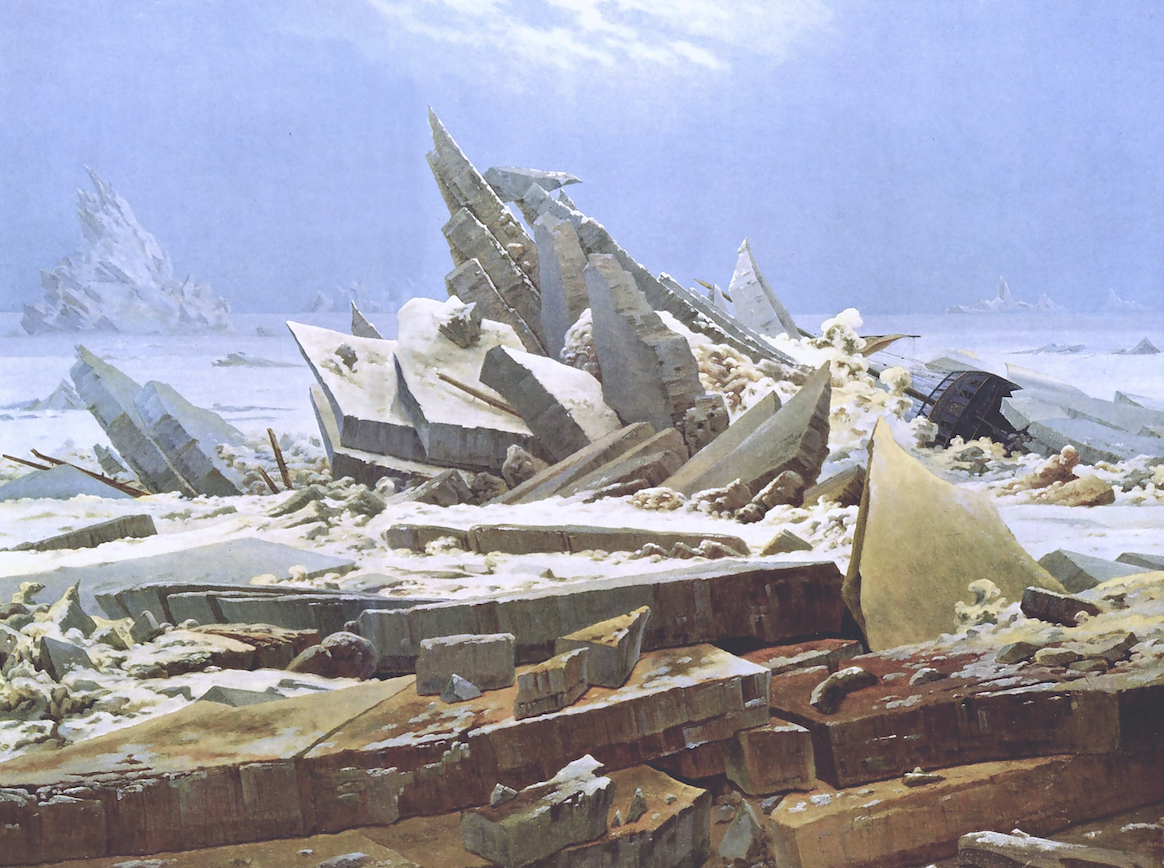Caspar David Friedrich’s painting, The Sea of Ice, captures the era’s opposing sentiments regarding exploration and human nature. One one hand, we see the beauty of the final frontier; it's awe inspiring wonder. But shown too are subtle cautionary warnings. Indeed, the piece offers a critique on the notion that progress is always beneficial; that no frontier should be left unexplored. Fittingly encompassing these paradoxical sentiments is the sense of the sublime pervading the painting. Both feelings of terror and pleasure are invoked, coinciding with the juxtaposed arguments surrounding exploration. Friedrich highlights, along with Coleridge and Shelley, that certain barriers are not meant to be crossed, physically and psychologically; that the era’s high stature surrounding ambition and the pursuit of progress may entail unintended consequences. Friedrich shows this rather overtly with the wrecked ship within the deadly ice. Coleridge provides a more abstract take, but obvious is the thematic subjugation of humanity towards divine law. Mary Shelley distils all viewpoints and crystallizing them into a novel. She provides the most overt warning signs regarding the blind pursuit of knowledge and danger of transgressing one’s nature. Overall, what we can grasp is an era rife with anxiety concerning what barriers should and shouldn’t be crossed. In an era where only the most extreme frontiers are left, we finally begin to see alternative notions come to the forefront. Namely, that ambition is not our ultimate salvation—what we should instead embrace is what we already have, not what we can potentially find.
Keywords: The Sublime, Formidable, Transgressions, Imposing, Inherent nature


